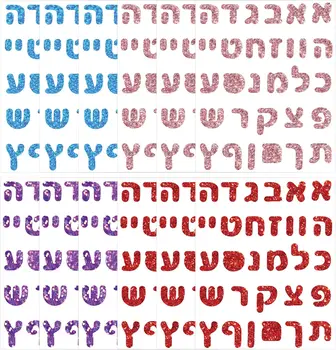There is a tradition at Rosh Hashanah, the Jewish New Year, to eat symbolic foods for an auspice new year. At the night of the Rosh Hashana, family sit together with the symbolic food placing around a big plate. All these food are calling for prosperity and goodness.
The food and its meanings are:
- Honey. How better to wish for a Shana Tova U’Metukah — a good and sweet new year — than to eat one of nature’s sweetest foods? Apples are the iconic accompaniment to honey. People will eat apples dipping inside the honey.
- Pomegranate. Pomegranate is special for many reasons. It is one of the Seven Species of Israel and has traditionally been used as a “new fruit” on Rosh Hashanah. But there’s another link between pomegranates and the Jewish New Year — just as the fruits are full of seeds, we hope we’ll be similarly full of merits in the coming year.
- Carrot. Carrot in Hebrew sounds very much like g’zar, the Hebrew word for decree. Eating them on Rosh Hashanah is meant to express our desire that G-d will nullify any negative decrees against us. Interestingly, the Yiddish words for “carrots” and “more” — mern and mer, respectively — are strikingly similar. So among Yiddish speakers, carrots symbolize the desire for increased blessings in the new year.
- Beet. The Hebrew word for beets, selek, is similar to the word for “remove.” They’re eaten to express the hope that our enemies will depart. In Aramaic, the language of the Gemara, silka referred to a leafy green vegetable akin to spinach. Some maintain that this leafy green is the original symbolic food for Rosh Hashanah and that beets are a more recent development. Of course, you could always hedge your bets with a spinach and beet salad.
- Beans. Rubia, which may refer to several different types of small beans, or even fenugreek, is reminiscent of the word yirbu, “to increase.” These foods symbolize the hope for a fruitful year filled with merit.
- Head of a fish or lamb. Including some sort of head on the menu is representative of our hope that we be likened to a head, and not a tail. In other words, we should move forward and make progress in the coming year, rather than follow or linger in the rear. Vegetarians may opt for a head of cabbage or garlic in place of the traditional fish or sheep’s head.
- Fish. The ancient belief that fish don’t sleep has been discredited, but the notion that fish are ever vigilant and swim constantly is linked to this symbol and reflects the desire to be constantly aware of G-d and of opportunities to do good.
- Leek. The word for leek is related to the word kareyt, meaning to cut. This symbol is linked to the prayer that those who wish to hurt us will instead be cut off.
- Gourd. The Hebrew word for gourd is related to the Hebrew homonyms pronounced k’ra. One word means “to rip,” the other “to announce.” We ask that G-d rip up any evil decree against us and that our merits be announced before Him.
- Date. The Hebrew word for dates, t’marim, evokes the word tam, “to end,” and the hope that our enemies will be finished. On a more positive note, dates, like pomegranates, are one of the Seven Species of Israel. And while archaeological evidence now shows that beekeeping was practiced in ancient Israel, it is generally agreed that when Israel is called “a land flowing with milk and honey,” the Torah is referring to date honey.







